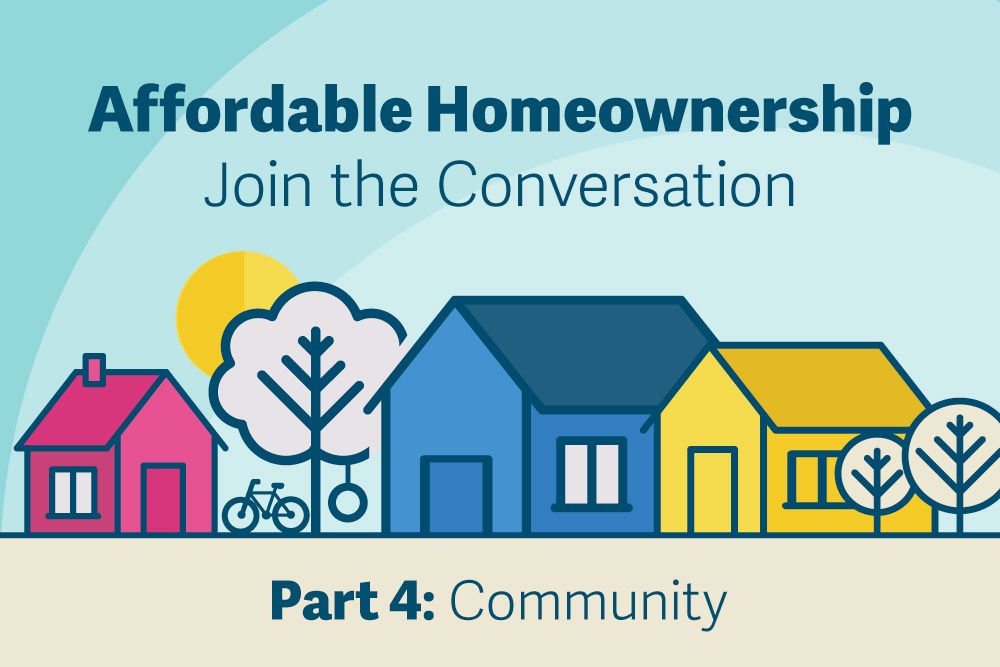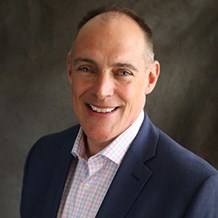This is the fourth in our 5-part Affordable Homeownership Series: Addressing the racial equity gap in homeownership
In the first article of this series, I laid out 4 areas any racial equity plan should attempt to address: Awareness, Readiness, Community and Solutions (ARCS). In the second article, Vance Edwards addressed building awareness with “mortgage ready” Americans. And in Part 3, Danny Garcia-Velez expanded on the concept of education and the systems and practices in place to help applicants who aren’t yet mortgage ready overcome barriers they face that may not be within their control.
For today’s topic, Community, we discuss how to push for and obtain results in your community by way of coordinated and collective action with other key stakeholders.
Moving the needle in your target communities
Every mortgage lender has certainly faced the frustration of not being able to help a borrower overcome fundamental barriers to eligibility, such as income, credit, lack of affordable housing supply, appraisal issues and property condition challenges.
Mortgage lenders, after all, primarily affect change in one way – by originating a mortgage loan that helps a family attain their dream of homeownership and spurs wealth creation through home price appreciation.
While the mortgage toolkit may offer many loan options, none address systemic housing affordability, supply, valuation, or property issues; nor do any prudently provide sustainable long-term homeownership to borrowers who are not yet prepared and ready to own a home. These are barriers endemic to neighborhoods and populations beset by persistently lower homeownership rates, and much work must be done to address them long before a 1003 is completed and signed.
So what can a mortgage lender do? The answer is: take “collective action.” None of these issues can be addressed solely by the good work of a single market participant. It will take coordinated and collective action involving multiple stakeholders over the long term to move the needle. However, by being a participant in such efforts – or perhaps by helping lead them – contributions of your time, talent, expertise and investment can make a big difference.
As you contemplate this opportunity, the right mindset is critical. First and foremost, be relational, not transactional. Focus on building relationships and not simply doing more transactions. If your collective efforts are successful, the opportunity for more transactions will come. Second, commit to “inreach” and not outreach. You’re not extending a hand to the community, you’re reaching into it to understand the challenges and how you can help.
The Milwaukee initiative
In Milwaukee, MGIC and several lenders are part of a collective action effort to address racial equity challenges in homeownership. One way we’ll define success is by meaningfully closing the homeownership gaps that exist between Black, Latino and white households in the city. The initiative is led by the Community Development Alliance (CDA), an affiliation of community development funders and practitioners that has collaborated on neighborhood improvement efforts in Milwaukee, and is driven by a Collective Affordable Housing Plan.
The Plan is the culmination of several months of meetings involving over 80 public, private, nonprofit, philanthropic and academic stakeholders. It was informed by qualitative and quantitative inputs. The qualitative contributions of lenders, housing advocates, counseling agencies and neighborhood associations pointed us to the biggest challenges. Data helped to quantify the challenges and inform solutions. And analytics now help establish reasonable milestones for evaluating if the pursued solutions are meaningfully moving the needle for communities of color.
Clearly, participation in the CDA and its workstreams to advance the Collective Affordable Housing Plan are not typical mortgage lender activities. Such participation may not necessarily manifest itself in more lending volume anytime soon. But the time and expertise of each participant is invaluable, and the participants themselves walk away more informed about how to address the challenges that they can within the context of their respective businesses.
The benefits of collective action
Collective action is the most effective way for groups of individuals who hold common objectives to break down systemic barriers and install systems that can help achieve those objectives. Participation in collective action efforts that address housing challenges in your target communities can provide at least 3 obvious benefits:
- Awareness – Participation will increase your awareness of the real issues facing communities of color and the organizations that are working to address these issues. This increased awareness may result in partnerships you never imagined and may unleash product development creativity.
- Credibility – Being an engaged and purposeful participant will immediately boost your organization’s esteem among other key community stakeholders. Being viewed as a credible discussant on important topics impacting housing supply and affordability, fair lending, homebuyer preparedness, racial equity, and access to credit will continue to deliver long-term benefits as you become a contributor to the solution.
- Purpose – I have yet to find a lender that doesn’t believe their business is steeped in the mission of helping families achieve their dreams of homeownership. Stepping beyond lending and participating as a stakeholder in a community-based collective action effort takes that mission to the next level. Many of us are likely familiar with Simon Sinek’s book Start with Why. In the book, he states, “People don’t buy WHAT you do, they buy WHY you do it.” Purpose sets organizations apart from one another. And people – whether they are employees, prospective employees, customers, prospective customers or other stakeholders – notice. As Sinek writes, “There are only 2 ways to influence human behavior: you can manipulate it or you can inspire it.” Purpose inspires.
Barriers that loan applications can’t address
Below is a list, albeit not all-inclusive, of issues we hope will be positively addressed through the collective action efforts in Milwaukee. This list probably mirrors the challenges in many other cities across the country:
- Appraisal gap – An appraisal gap exists when the cost of acquiring and rehabbing a property exceeds its market value as established through an appraisal. Subsidy is needed to bridge the gap, but if re-development is concentrated in a given area, the gap may reduce and be eliminated over time. Other non-housing factors also impact appraisal gaps – consider quality-of-living factors such as food deserts, access to accredited early childhood education, green space, quality schools and crime. The solution to housing challenges isn’t always housing.
- Affordable housing supply – In many markets, investors are snapping up single-family units and repositioning them as rental properties. This is reducing the affordable inventory available to buyers and driving up costs. In Milwaukee, we’re hoping the formation of an acquisition fund, along with other nonprofit-led production models, can keep properties out of investors’ hands and rehabilitate them for homebuyers.
-
Credit barriers – Black and Latino households are less likely to meet traditional credit requirements. The barrier is often a lack of traditional tradelines, as opposed to a track record of poor credit. This is a key point that Vantage Score raises in its claim that the inclusion of non-traditional credit references in its scoring algorithm results in 37 million more “credit visible” individuals, of which 30% are Black or Latino. Black and Latino renters also are more likely to have traditional credit that falls shy of meeting mortgage market standards. This point was driven home by Freddie Mac’s article, “Who Are the Future Borrowers? A Deep Dive into their Barriers and Opportunities.” The research highlights that Black and Latino renters who are credit visible represent 46% of the nation’s adult population who are either “Near Mortgage Ready” or “Not Currently Mortgage Ready.”
- Homebuyer preparedness and assistance – In Milwaukee, we focus on increasing the capacity of homebuyer education (HBE) providers as well as boosting down payment assistance (DPA) resources. We’ve distilled the solution into a simple math equation: “If our goal is to help x number of Black and Latino renters achieve homeownership over x years, what are the HBE and DPA resources needed to help achieve this goal?” Efforts are underway to procure those resources to ensure we can meet our mutual objectives.
Building your checklist
While there’s no tried-and-true template for assuring meaningful community engagement as part of an affordable housing strategy, we believe there are core tenets. As you build out your racial equity plan, here are a few suggestions to consider in the area of Community. Stick with these and you and other community stakeholders will likely begin to break down some of the barriers that have caused loan denials in the past.
Advocate for collective action, strong leadership and inclusivity
- Are you able to plug into existing efforts or take the lead in helping forge brand new efforts?
- Which housing and community stakeholders, including public and nonprofit participants and other private-sector entities, might participate in these efforts? Take inventory of who should be at the table and be sure to invite them.
- How can you advocate for strong program management and leadership to ensure efforts remain sustained over time and actions remain collective and coordinated?
Quantify challenges using data and analytics
- How can you collect and leverage data and analytics to establish solutions and milestones?
- How should you measure results so you can build the case for gaining additional resources from government, philanthropic, and mission-minded investors?
Determine your commitment level
- What are you able to contribute to the effort in terms of time, talent, expertise and possibly financial support? Be as unambiguous as you can about that commitment.
Push for results
- How can you push your peers for tangible results to avoid platitudinal efforts that achieve little more than the proverbial blue-ribbon task force?
Find partners
- Who are the key stakeholders in the room that you can partner with to pursue your own objectives that align with the broader objectives of the collective action effort?
- What are some ways you can find synergy with one another to multiply the positive benefits of the collective effort by working together?
What we’ve laid out may seem like a big lift. This is merely a framework for how to take your mission beyond the loan application. Should you pursue it, however, the positive impact within and outside of your organization may be exponential.
"
